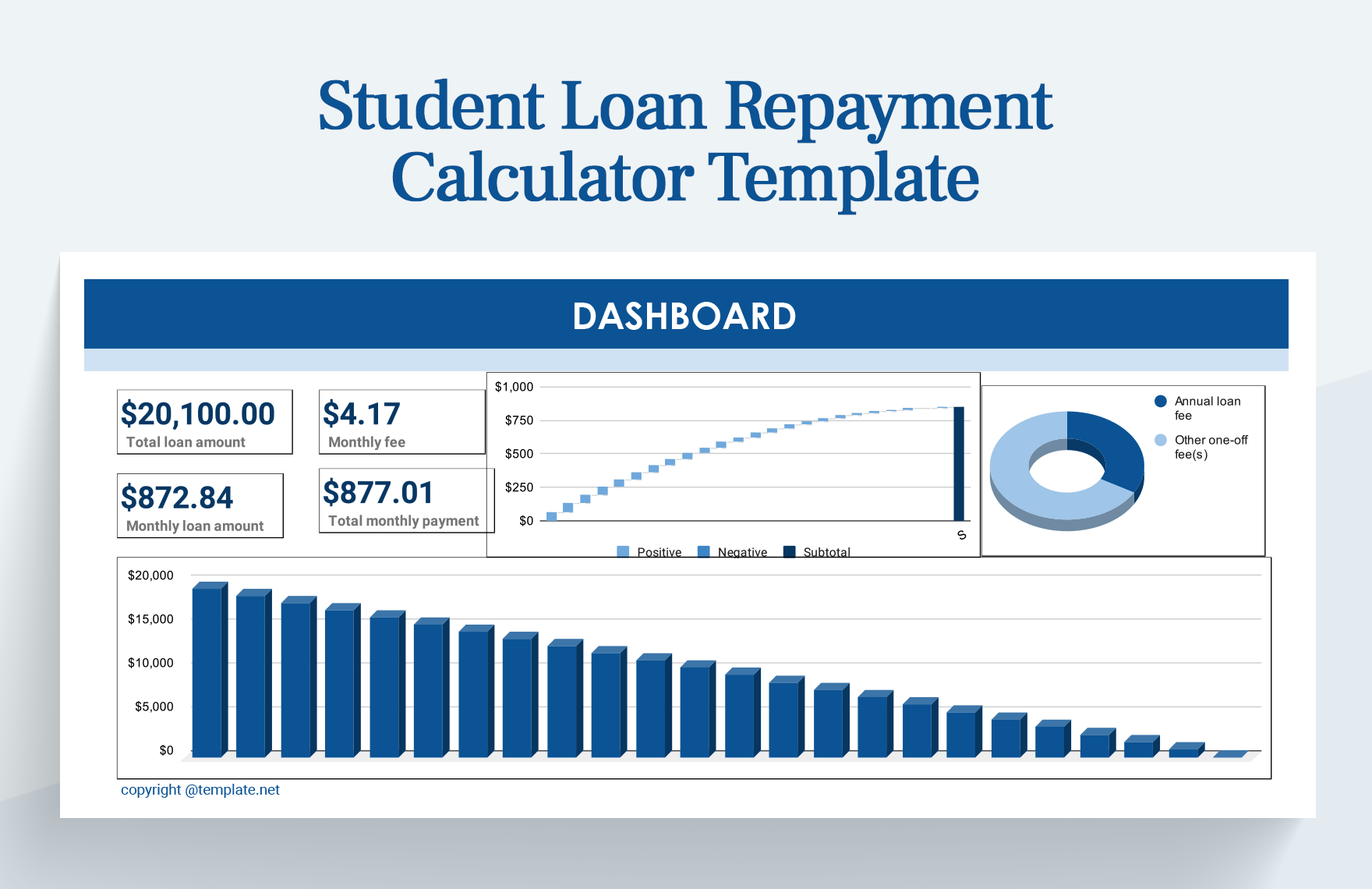Hey there, student loan warriors! If you're reading this, chances are you're knee-deep in the world of student loans and wondering how the heck you're going to repay them without losing your mind or your wallet. Well, buckle up because we’re diving deep into the nitty-gritty of student loan repayment rules revealed. This is your one-stop shop for everything you need to know about paying off those pesky loans.
Let’s face it—student loans are like that friend who sticks around longer than you’d hoped, but hey, they got you through college, right? Now it’s time to figure out how to say goodbye on your terms. From repayment plans to hidden fees, we’ve got all the juicy details you need to navigate this financial maze.
In this guide, we’ll break down the rules, the tricks, and the strategies you can use to make repayment less painful. Whether you’re fresh out of school or have been dealing with loans for years, this is your chance to get the inside scoop on how to manage your debt like a pro. So grab a coffee, settle in, and let’s tackle those loans together!
Read also:Securely Connect Remote Iot P2p Raspberry Pi Download Free Your Ultimate Guide
Table of Contents
- Biography of a Student Loan
- Basic Repayment Rules Every Borrower Should Know
- Income-Driven Repayment Plans Explained
- What’s Up With Deferment and Forbearance?
- Loan Consolidation: Is It Worth It?
- Student Loan Forgiveness Programs Demystified
- Tax Implications of Student Loan Repayment
- Common Mistakes Borrowers Make—and How to Avoid Them
- Smart Tips for Managing Your Student Loans
- Future Trends in Student Loan Repayment
Biography of a Student Loan
Before we dive into the repayment rules, let’s take a moment to understand what exactly a student loan is and how it works. Think of it as the backstory of your financial journey. Student loans are like that long-term relationship you didn’t plan for but somehow ended up in. They’re there to help you achieve your dreams, but they come with strings attached.
Here’s a quick breakdown of how student loans typically work:
- You borrow money to pay for tuition, books, and living expenses.
- Interest starts accruing, even while you’re still in school.
- After graduation, the repayment clock starts ticking.
- You’re expected to pay back the loan, plus interest, over a set period of time.
Loan Types and Their Characteristics
Not all student loans are created equal. There are federal loans, private loans, subsidized loans, unsubsidized loans—you name it. Each type has its own set of rules and benefits. For example:
- Federal Loans: These are backed by the government and usually come with more flexible repayment options.
- Private Loans: Offered by banks or other financial institutions, these often have higher interest rates and fewer borrower protections.
Understanding the type of loan you have is crucial because it affects your repayment options and overall strategy.
Basic Repayment Rules Every Borrower Should Know
Alright, let’s get down to business. What are the basic rules you need to follow when repaying your student loans? Think of these as the ground rules of your financial game plan.
First things first: know your lender. Whether it’s the federal government or a private institution, knowing who you owe money to is half the battle. Next, familiarize yourself with your repayment schedule. Most loans come with a standard 10-year repayment plan, but you can adjust this based on your financial situation.
Read also:Hd Hub 2 The Ultimate Guide To Unlocking Highdefinition Entertainment
Key Points to Remember
- Always make payments on time to avoid late fees and damage to your credit score.
- If you’re struggling to make payments, reach out to your lender immediately. They might offer alternative plans or temporary relief.
- Keep track of your interest rates. High-interest loans should be prioritized to save money in the long run.
Remember, knowledge is power. The more you know about your loans, the better equipped you’ll be to manage them.
Income-Driven Repayment Plans Explained
So, what happens if your student loan payments feel like they’re swallowing your entire paycheck? Enter income-driven repayment (IDR) plans. These plans adjust your monthly payments based on your income, making repayment more manageable.
There are several types of IDR plans available, including:
- Income-Based Repayment (IBR)
- Pay As You Earn (PAYE)
- Revised Pay As You Earn (REPAYE)
Each plan has its own eligibility requirements and benefits. For example, PAYE generally offers lower payments than IBR, but it’s only available to borrowers who took out loans after October 2007.
Pros and Cons of IDR Plans
While IDR plans can be a lifesaver, they’re not without drawbacks. On the plus side, they make payments more affordable and offer forgiveness after a certain number of years. On the downside, you might end up paying more in interest over the life of the loan.
It’s all about weighing the pros and cons and choosing the plan that works best for your situation.
What’s Up With Deferment and Forbearance?
Life happens, and sometimes you need a break from those student loan payments. That’s where deferment and forbearance come in. These options allow you to pause or reduce your payments temporarily without going into default.
Deferment: This is typically available for federal loans and allows you to postpone payments for up to three years. During deferment, interest on subsidized loans is paid by the government, but it continues to accrue on unsubsidized loans.
Forbearance: This is more flexible than deferment and can be used for both federal and private loans. However, interest continues to accrue during forbearance, so it’s important to weigh the costs before choosing this option.
When to Use These Options
Deferment and forbearance should be used as a last resort when you’re facing financial hardship. They can provide short-term relief, but they won’t solve long-term issues. Always explore other options, like IDR plans, before resorting to these measures.
Loan Consolidation: Is It Worth It?
Loan consolidation is another tool in your repayment arsenal. It involves combining multiple loans into a single loan with a fixed interest rate. Sounds simple, right? But is it worth it?
Consolidation can simplify your payments by reducing the number of loans you have to manage. It might also lower your monthly payments, depending on the terms of the new loan. However, it’s important to note that consolidation can extend the life of your loan, meaning you’ll pay more in interest over time.
Things to Consider Before Consolidating
- Will consolidation save you money in the long run?
- Are you losing any benefits, like interest subsidies, by consolidating?
- Do you understand the terms of the new loan?
Take the time to crunch the numbers and make an informed decision. Consolidation isn’t right for everyone, but it can be a great option for some borrowers.
Student Loan Forgiveness Programs Demystified
Now, here’s the golden ticket many borrowers are hoping for: student loan forgiveness. While it’s not a magic wand that makes all your debt disappear, forgiveness programs can significantly reduce or eliminate your loan balance under certain conditions.
Some popular forgiveness programs include:
- Public Service Loan Forgiveness (PSLF): Available to borrowers working in public service or nonprofit roles.
- Teacher Loan Forgiveness: Designed for teachers working in low-income schools.
- Loan Forgiveness for Nurses and Other Healthcare Professionals: Tailored to those in the healthcare field.
Eligibility and Requirements
Each program has its own eligibility requirements and application process. For example, PSLF requires borrowers to make 120 qualifying payments while working full-time for a qualifying employer. It’s important to carefully review the requirements and ensure you meet them before applying.
Tax Implications of Student Loan Repayment
Let’s talk taxes because, let’s face it, nothing in life is free—not even student loan forgiveness. Depending on how your loans are forgiven, you might have to pay taxes on the forgiven amount. This is often referred to as “cancellation of debt income.”
However, there are some exceptions. For example, forgiveness through PSLF is generally tax-free. It’s always a good idea to consult with a tax professional to understand the implications of your specific situation.
Strategies for Minimizing Tax Burden
- Take advantage of tax deductions for student loan interest.
- Plan ahead for potential tax liabilities associated with forgiveness.
- Consider refinancing to a lower interest rate to reduce your overall tax burden.
Being proactive about taxes can save you a lot of headaches down the road.
Common Mistakes Borrowers Make—and How to Avoid Them
Even the best-laid plans can go awry if you’re not careful. Here are some common mistakes borrowers make when repaying their student loans and how to avoid them:
- Ignoring Your Loans: This is a recipe for disaster. Always stay on top of your payments and communicate with your lender if you’re having trouble.
- Not Understanding Your Options: Knowledge is power. Take the time to learn about all the repayment options available to you.
- Refinancing Without Research: Refinancing can be a great option, but it’s important to shop around and compare rates before making a decision.
Avoiding these mistakes can save you time, money, and a lot of stress.
Smart Tips for Managing Your Student Loans
Now that we’ve covered the basics, here are some smart tips for managing your student loans:
- Automate your payments to avoid late fees and improve your credit score.
- Make extra payments whenever possible to reduce the overall amount of interest you pay.
- Take advantage of any employer-sponsored repayment assistance programs.
Small changes can add up to big savings over time. The key is to stay consistent and proactive in managing your loans.
Future Trends in Student Loan Repayment
As the world of finance continues to evolve, so do the rules and options for student loan repayment. We’re seeing more emphasis on borrower protections, innovative repayment plans, and even potential legislative changes that could impact how loans are managed in the future.
Stay informed and keep an eye on developments that could affect your loans. Being ahead of the curve can give you a competitive edge in managing your debt.
What to Watch For
- Potential changes to forgiveness programs.
- New repayment options being developed by lenders.
- Legislative actions that could impact interest rates or borrower protections.
The more you know, the better prepared you’ll be to navigate the ever-changing landscape of student loan repayment.
Conclusion
So there you have it—the ultimate guide to student loan repayment rules revealed. From understanding the basics to exploring advanced strategies, this guide has everything you need to take control of your loans and start building a brighter financial future.
Remember, repaying student loans doesn’t have to be a daunting task. With the right knowledge and tools, you can manage your debt effectively and achieve financial freedom. So don’t just sit there—take action! Leave a comment, share this article with your friends, or check out our other resources for more tips and tricks.
Here’s to crushing those student loans and living the life you deserve!


